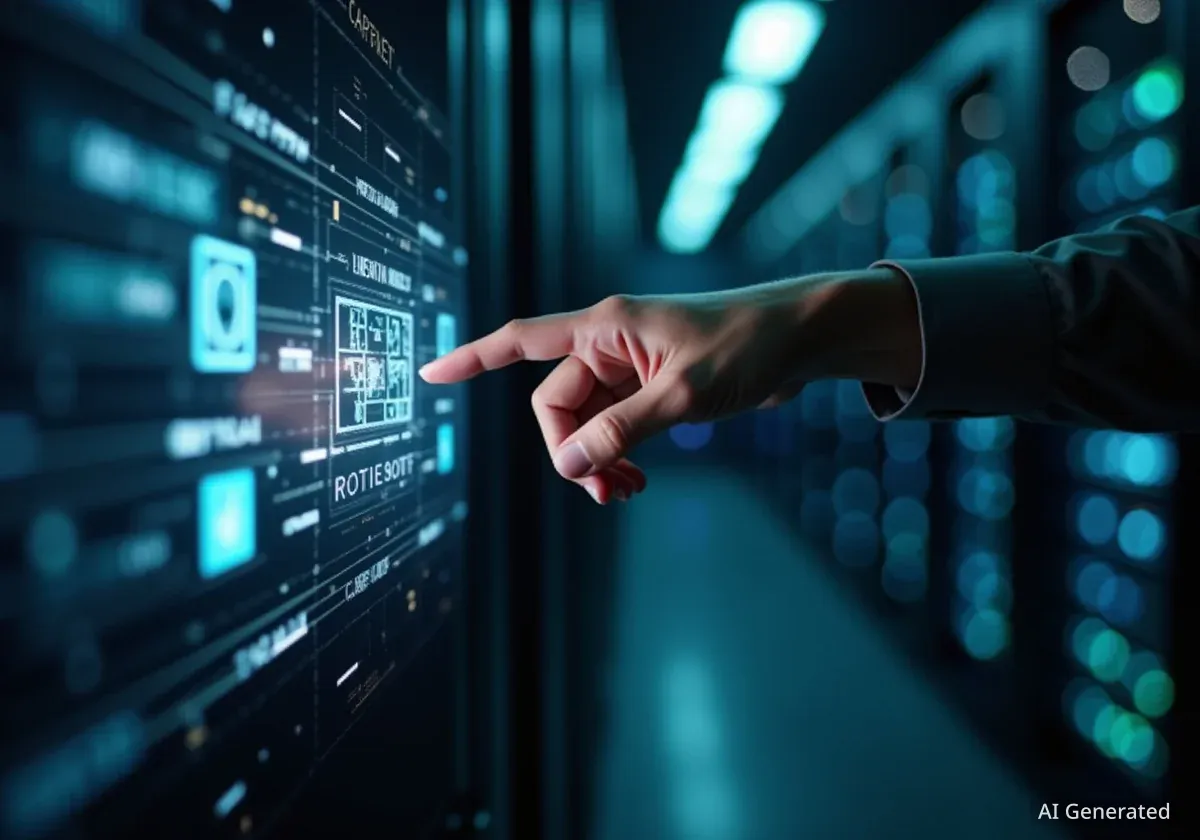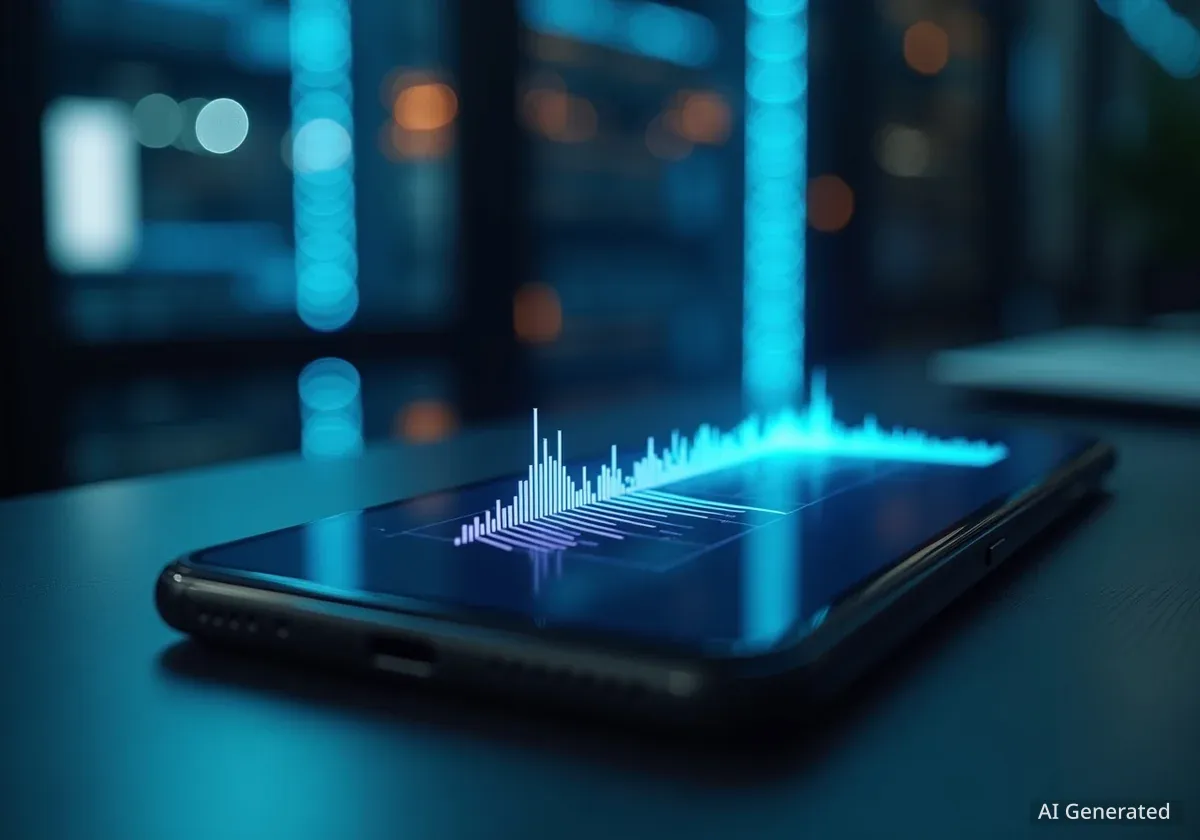The rapid advancement of artificial intelligence has enabled criminals to clone a person's voice using just a few seconds of audio, creating a significant new threat for financial institutions and individuals. In response, cybersecurity firms are now deploying their own AI systems designed specifically to detect these sophisticated vocal deepfakes, initiating a technological arms race to secure personal data.
This new form of fraud allows attackers to impersonate victims over the phone, potentially gaining access to bank accounts, authorizing transactions, or bypassing security protocols. As the technology for creating fake voices becomes more accessible, companies are investing heavily in AI-powered countermeasures to distinguish between genuine human speech and synthetic audio.
Key Takeaways
- Artificial intelligence can replicate a human voice with only a few seconds of sample audio.
- These AI-generated voice clones, or deepfakes, are increasingly used in financial fraud schemes.
- Cybersecurity companies are developing sophisticated AI models to detect and block these synthetic voices.
- The conflict represents a new frontier in security, where AI is used by both attackers and defenders.
The Growing Threat of Vocal Deepfakes
The ability to create realistic, synthetic voices is no longer confined to specialized research labs. Widely available software can analyze a short audio clip from a social media video or a voicemail and generate a digital clone of that person's voice. This clone can then be used to say anything the fraudster types into a text-to-speech interface.
Criminals are leveraging this technology to target systems that rely on voice authentication. Financial institutions, which often use voice biometrics to verify customer identities over the phone, have become a primary target. An attacker can use a deepfake voice to impersonate a customer, reset passwords, and gain unauthorized access to sensitive financial information.
What is a Vocal Deepfake?
A vocal deepfake is a piece of audio that has been generated or manipulated by an AI system to sound like a specific person. The AI, often a type of neural network, is trained on a sample of the target's voice. It learns the unique characteristics of their speech—such as pitch, cadence, and accent—to create new audio that is convincingly similar to the real person.
The implications extend beyond banking. Scammers have used voice clones to create fake emergencies, calling family members while pretending to be a loved one in distress to solicit money. This type of social engineering is particularly effective because the familiar voice can override a person's initial skepticism.
Fighting Fire with Fire: AI-Powered Detection
To combat this emerging threat, security experts are turning to the same underlying technology: artificial intelligence. New detection systems are being developed to analyze incoming audio in real-time and determine if it is human or machine-generated. These systems are designed to be integrated into call center software and other security platforms.
These AI detectors do not listen for what is being said, but rather how it is being said. They are trained on vast datasets containing both real human speech and millions of examples of synthetic audio. By doing so, they learn to identify the subtle, often imperceptible, artifacts that AI voice generators leave behind.
Spotting the Fakes
AI detection models analyze various acoustic properties to identify synthetic voices. These can include:
- Unnatural Pauses: Slight irregularities in breathing sounds or pauses between words.
- Frequency Artifacts: Tiny distortions in the audio frequencies that are invisible to the human ear but detectable by algorithms.
- Lack of Emotional Variation: Even advanced models can struggle to replicate the full range of human emotion and intonation.
- Consistent Background Noise: Synthetic audio may have an unnaturally clean or perfectly consistent background noise profile.
According to cybersecurity research firms, these detection systems can now identify top-tier voice clones with over 95% accuracy. This capability provides a critical layer of defense for organizations that rely on voice-based communication for sensitive operations.
A New Arms Race in Cybersecurity
The dynamic between voice generation and detection has been described as a technological "cat-and-mouse game." As AI models for creating deepfakes become more sophisticated, the models for detecting them must evolve in parallel. Each improvement in voice synthesis creates a new challenge for security systems.
"We are witnessing a classic cybersecurity arms race. For every new method of attack, a new method of defense must be created. In this case, the battle is being fought entirely in the domain of artificial intelligence," stated a leading AI ethics researcher.
This ongoing conflict has spurred a new market for specialized security solutions. Startups and established tech companies are now offering "deepfake detection as a service" to banks, insurance companies, and government agencies. The goal is to make detection technology as accessible as the tools used to create the fakes.
The business of crime is adapting quickly. Experts predict that fraudsters will soon use AI to test their deepfakes against known detection systems, refining their methods until they can bypass security checks. This necessitates continuous research and development from the defense side.
Protecting Financial Systems and Consumers
Financial institutions are among the earliest adopters of this new AI-driven defense. By integrating voice-detection AI into their customer service phone lines, they can flag suspicious calls for review by a human agent before any sensitive action is taken. This proactive approach helps prevent account takeovers and fraudulent wire transfers.
Steps for Protection
While companies implement enterprise-level solutions, experts suggest that individuals can also take steps to protect themselves:
- Be Cautious of Urgent Requests: Be wary of unexpected calls requesting money or personal information, even if the voice sounds familiar.
- Establish a Safe Word: For close family members, having a pre-arranged safe word or question can help verify their identity during a suspicious call.
- Verify Through a Different Channel: If you receive a distressing call, hang up and contact the person directly on a known phone number or through a different communication app to confirm the situation.
- Limit Public Audio Samples: Be mindful of the amount of your voice that is publicly available online through videos, podcasts, or social media posts.
The development of these defensive AI systems marks a critical step in maintaining trust in digital communications. As AI technology becomes more integrated into daily life, the ability to distinguish between authentic and synthetic content will be fundamental to personal and financial security.





